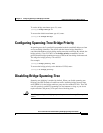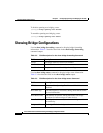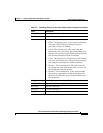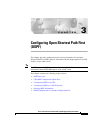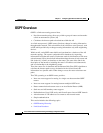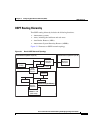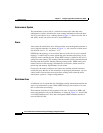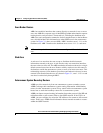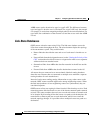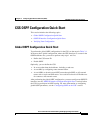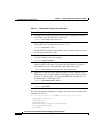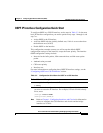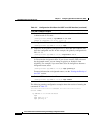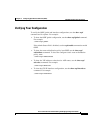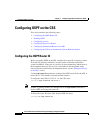
3-5
Cisco Content Services Switch Routing and Bridging Configuration Guide
OL-4580-01
Chapter 3 Configuring Open Shortest Path First (OSPF)
OSPF Overview
Area Border Routers
ABRs have multiple interfaces that connect directly to networks in two or more
areas. An ABR runs a separate copy of the OSPF algorithm and maintains separate
routing data for each area that is connected to it, including the backbone area.
ABRs also send configuration summaries for their attached areas to the backbone
area, which distributes this information to other OSPF areas in the autonomous
system. In Figure 3-1, there are two ABRs. ABR 1 interfaces area 1.1.1.1 to the
backbone area. ABR 2 interfaces the backbone area to area 1.1.1.2, a stub area.
Note ABRs are always backbone routers. You must configure ABRs to the backbone
area.
Stub Area
A stub area is an area that does not accept or distribute detailed network
information external to the area. A stub area has only one router that interfaces
the area to the rest of the AS. The ABR attached to the stub area advertises a single
default external route into the area. Routers within a stub area use this route for
destinations outside the autonomous system, as well as for inter-area routes. This
relationship conserves LSA database space that would otherwise be used to store
external LSAs flooded into the area. As shown in Figure 3-1, area 1.1.1.2 is a stub
area that is reached only through ABR 2.
Autonomous System Boundary Routers
ASBRs provide connectivity from one autonomous system to another system.
ASBRs exchange their autonomous system routing information with boundary
routers in other autonomous systems. Every router inside an autonomous system
knows how to reach the boundary routers for its autonomous system.
ASBRs can import external routing information from other protocols like RIP and
redistribute them as AS-external LSAs to the OSPF network. If the CSS is an
ASBR, you can configure it to advertise VIP addresses for content as AS external
routes. In this way, ASBRs flood information about external networks to routers
within the OSPF network.



